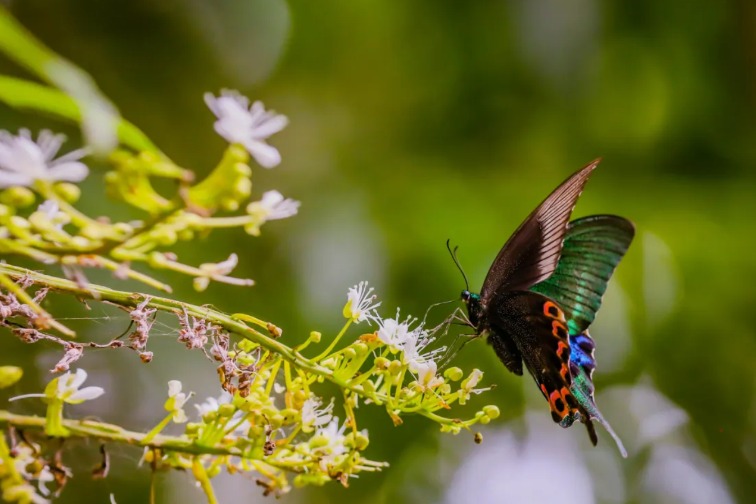Cliffs that sport mystical tattoos
By LI YANG | CHINA DAILY | Updated: 2022-06-03 07:32

Each set of figures consists of a giant leader standing at the center, swords hanging by his side. He stands solemnly on a frog-like beast. There are numerous such figures, some scantily clad, others nude. Then there are smaller figures beating bronze drums, paddling canoes, or gathering by the riverside around their leaders.
Most of the human figures on the paintings are stretching out their arms on both sides, and their elbows are bent upwards. They appear to be imitating frog postures, as China Discovery, an online travel agency, says on its website. Frog worship was indeed an ancient Zhuang tradition, and the frog dance still exists. Bronze drums appear in the paintings, and beating bronze drums remains a custom among the Zhuangs today.
Certain human figures have clear gender and age differences. Also, there are figures of pregnant women and children. Some believe that they reflect how the ancient Luoyue people worshipped fertility.
The cliff murals are recorded in Chinese literature of the Ming (1368-1644) and Qing (1636-1912) dynasty period. It remains a mystery how the ancient Luoyue people painted those murals atop those towering cliffs for over 700 years. As also, how the pigments have withstood the tests of thousands of years to still remain bright.
The cliff murals were recognized as cultural relics worthy of State protection in 1988, and as a UNESCO World Heritage Site in 2016 for being the only cultural remnants today of the Luoyue people. The rock art is evidently related to the beliefs of the residents of the area of the time. Today the painted mountains are revered by local people and rituals and sacrifices are performed to appease the invisible forces affecting their lives.
What sets Zuojiang Huashan apart from other rock art is that it is an integral part of the natural system, having survived 2,000 years.
























